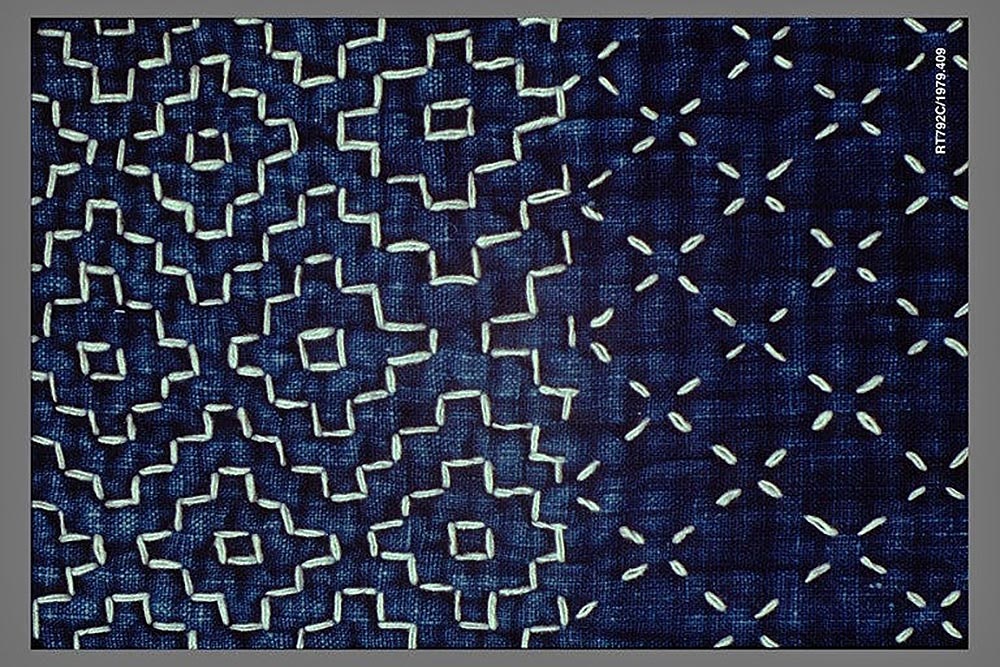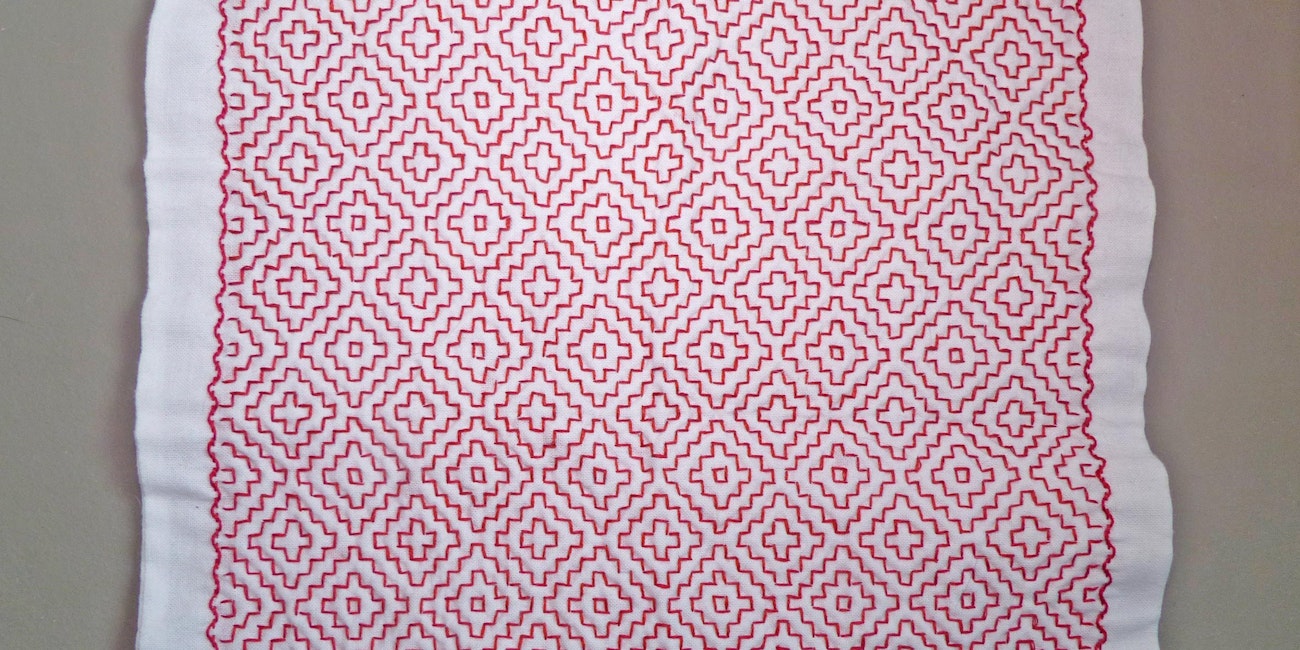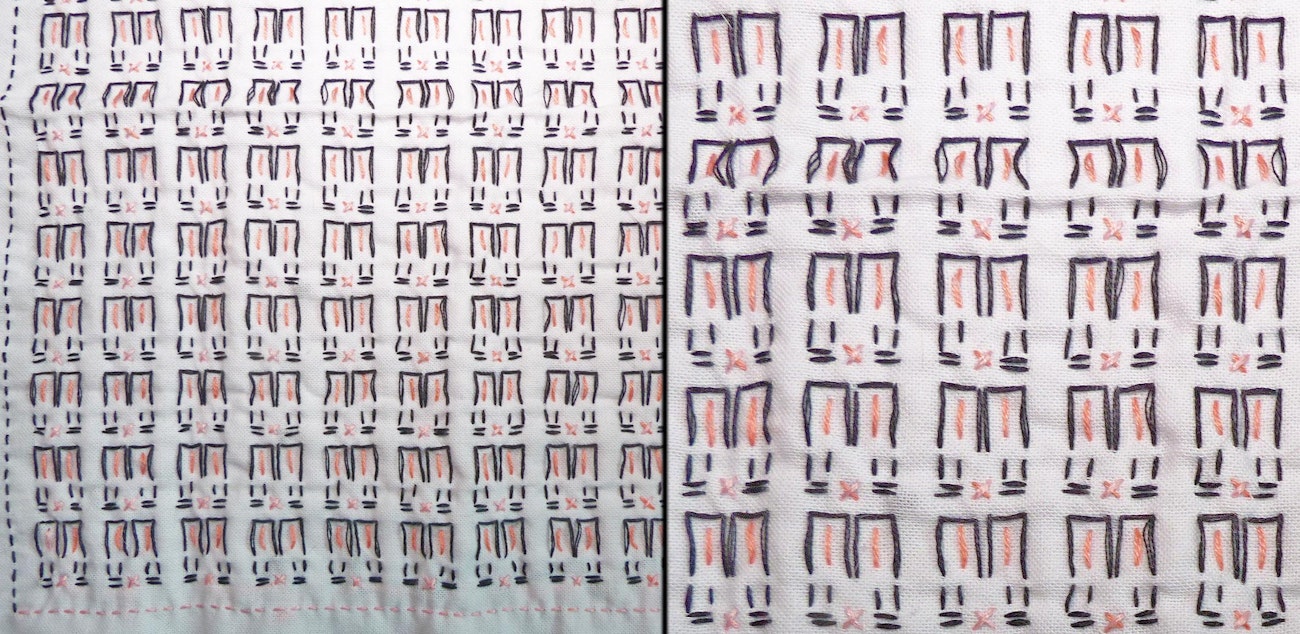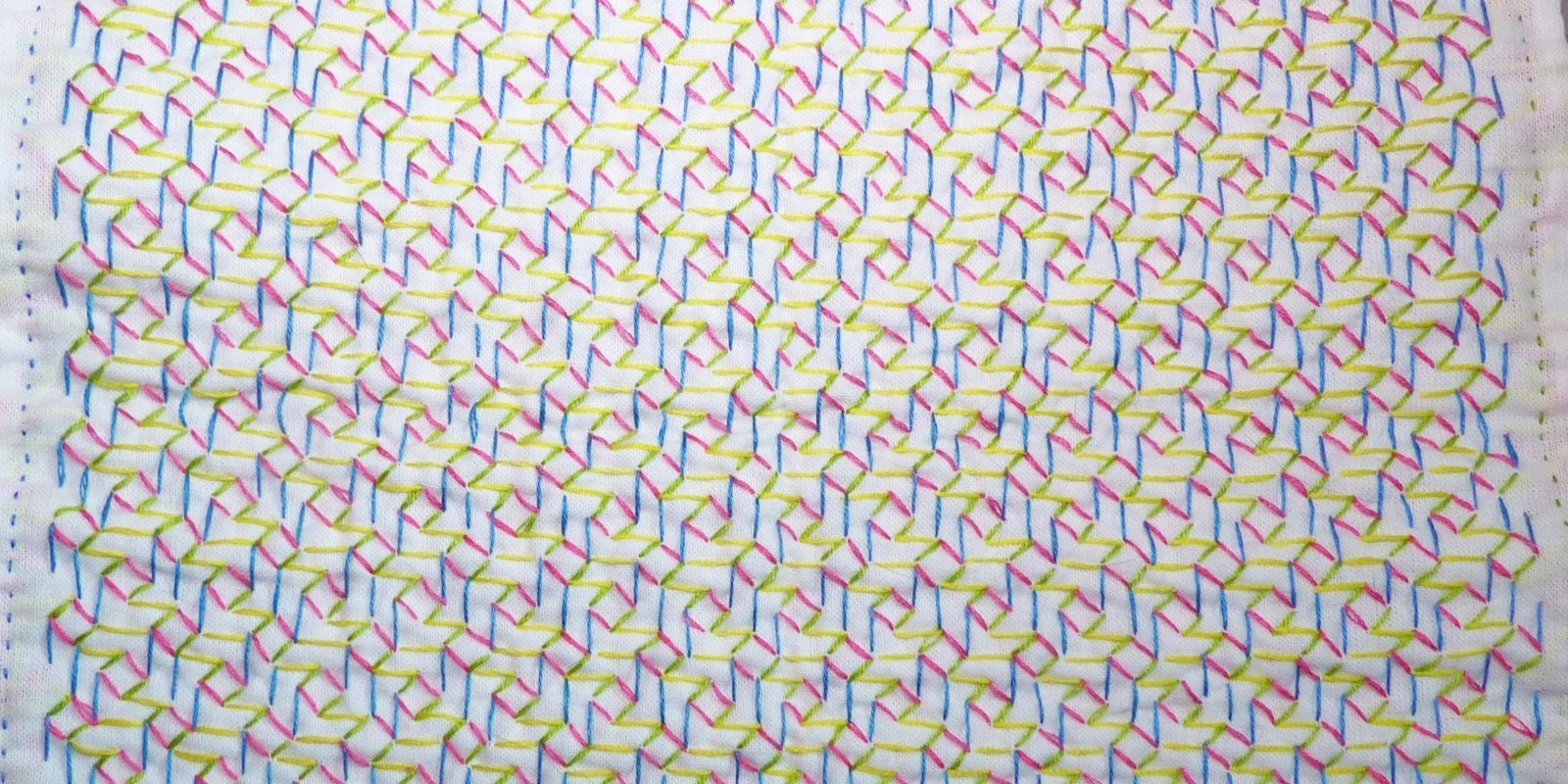My introduction to hitomezashi came after a deep dive into the world of sashiko. I loved exploring sashiko, a decorative stitching tradition from Japan, and its regional cousin, hitomezashi. Hitomezashi as we often see it today is a more colorful and complex, yet simpler to execute, form of sashiko. Both are traditional mending methods of the historic peasant class of Japan.

Detail of Sashiko Kimono, mid-nineteenth century, Japan (1979.409). Hitomezashi-style stitching on the left and sashiko on the right. Courtesy of the Metropolitan Museum of Art
When you look at the various patterns that can be stitched with hitomezashi, it can seem complicated with all the lines of stitches running at differing angles. But once I learned the basic method of how to run the thread through the fabric, I found it much simpler than many other embroidery techniques that I have encountered. A running stitch—that is all it is—goes in a complete, unbroken line, from right to left, horizontally or diagonally, one way. Then you rotate the fabric and go in the opposite direction. Meditative and methodical, hitomezashi is about laying straight lines of footprints with thread on a field of plain color.

Persimmon Flower design. 9" (23 cm) square.
Slow vs. Fast Stitching
Many embroidery techniques can be worked more slowly or more quickly depending on the placement of your hands. Going the slow route means punching the needle through to the back of the piece, then punching it up again from the back. This creates very precise and neat stitches for the experienced needleworker. With a faster stitching method, the needle is inserted and drawn through the front side of the fabric. In hitomezashi, this means that several stitches are collected onto the needle before pulling the thread through.
I have long prided myself on my small, evenly spaced stitches, no matter the type of embroidery I am working with. Hitomezashi traditionally uses the philosophy of fast stitching. It is, after all, a means to mend something; both the person working the needle and the one needing the mending done wanted the job done as soon as possible. Finding a balance between speed, quality, and personal stitching style is important.
While stitching various projects using hitomezashi, I tried to put aside my preconceived ideas of what was beautiful and proper needlework and adopt the fast-stitching philosophy of getting more done with one draw of the needle, even if that meant some loss of precision as I practiced. The results were astounding to me. Not only did the imperfections create a more interesting embroidery piece, but they added a sense of humanity to my work that a more precise method of stitching could not. The idea that the line of stitches had to remain loose so as not to pucker the fabric was also something that I always had to keep in mind. My natural thread tension can be tight, as if I am taking the stress of life out on the thread. “Keep it loose” was a mantra that I kept repeating as I worked.

Rabbit design (with detail shown at right). 9" (23 cm) square.
Learning to Let it Go
Seeing the uneven stitches here and there throughout my embroidery pieces reminded me that it is the journey, not the end result, that is important, and if the final product will do the job, despite the human errors along the way, that is good enough. It is the enjoyment of the task that makes the work and time worthwhile, not the artistry or perfection in execution. Without being too concerned about the finer points of accuracy and skill, even a beginning stitcher can create a nice-looking piece of hitomezashi. This is the lesson that this Japanese peasant embroidery taught me: Life is too short to sweat over the fine details; enjoy the journey more than the destination.
Printed canvases and stitching kits are available from Japanese crafts supplier Olympus Threads.
Adeline Panamaroff is a freelance writer whose works have appeared in Embroidery Canada, Edmonton Stitcher, Yatta-Tachi, among others. She loves to explore the history of fiber arts because knowing where we came from colors where we choose to go. Adeline can be contacted at adelinepanamaroff.com.

